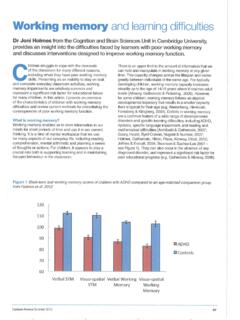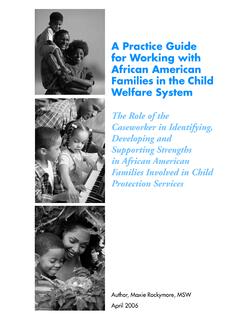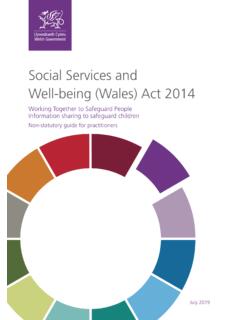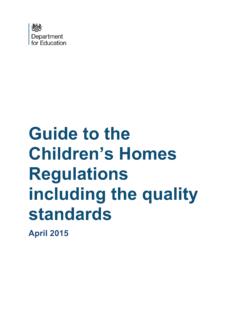Transcription of A Classroom Guide - MRC Cognition and Brain Sciences Unit
1 Understanding working MemoryA Classroom GuideProfessor Susan E. Gathercole&Dr Tracy Packiam Alloway2????Copyright 2007 by S. E. Gathercole and T. P. AllowayAll rights reserved. No part of this publication may be reproduced or transmitted in any form or by any means, electronic or mechanical, including photocopy, recording or any informationstorage or retrieval system, without permission in writing from the by Harcourt Assessment, Procter House, 1 Procter Street, London WC1V and printed in the United 08 09 10 A B C DVisit our website booklet provides an introduction toworking memory and the role it plays ineveryday life, especially in supporting learning in school. The learning difficultiescommonly faced by children with verypoor working memory skills are described,and are illustrated with case studies.
2 A programme of Classroom support forchildren with working memory problems is is working memory ?Psychologists use the term working memory to describe the ability we haveto hold in mind and mentally manipulate information over short periods oftime. working memory is often thought of as a mental workspace that we can use to store important information in the course of our mental activities. A good example of an activity that uses working memory is mental , for example, attempting to multiply 43 and 27 together, and spoken to you by another person, without being able to use a pen and paper or a of all, you would need to hold the two numbers in working memory . The next step would be to use learned multiplication rules to calculate theproducts of successive pairs of numbers, adding to working memory the newproducts as you proceed.
3 Finally, you would need to add together theproducts held in working memory , resulting in the correct solution. Withoutworking memory we would not be able to carry out this kind of complexmental activity in which we have to both keep in mind some information whileprocessing other material. 4 When do we use working memory ?Mental arithmetic is just one example of an activity that relies on workingmemory. Other examples from everyday life include: remembering a new telephone number, a PIN number, web address or a vehicle registration number while we are trying to find a pen and paper to write it down or to use it in some other way following spoken directions such as Go straight over at theroundabout, take the second left and the building is on the rightopposite the church calculating how much the bill will be at the supermarket checkoutfor the items we have in our basket remembering the unfamiliar foreign name of a person who has justbeen introduced to you for long enough to enable you to introducethem to someone else measuring and combining the correct amounts of ingredients ( rub in 50g of margarine and 100g of flour, and then add 75g of sugar)
4 When you have just read the recipe but are no longer looking at the may notice from these examples that we typically use working memoryas a sort of mental jotting pad in situations when there is no other externalrecord such as written notes or a calculator. Understanding working Memory5 Are there limits to working memory ?Yes. It is unfortunately true that working memory is limited in a number of ways, and can easily fail us when we need it. In particular, we need to continue to pay attention to what is being held in working memory if it is to persist over even short periods of time. Here are some of the situationsthat often lead to the loss of information from working memory . unrelated thought springing to mind, or an interruptionsuch as a telephone ringing or someone speaking to us, can besufficient to divert attention the contents of working memory so that its contents are rapidly lost.
5 Trying to hold in mind too much is a limit to howmuch information can be held in working memory . For example, mostof us would not be successful in attempting to multiply the numbers739 and 891 in our heads, simply because the amount of informationthat has to be stored in the course of this calculation exceeds thecapacity of most people s working memory . Engaging in a demanding that require difficult mentalprocessing, such as applying the rules of multiplication during mentalarithmetic, reduce the amount of space in working memory to storeinformation. This can result in a loss of other information that is already information has been lost from working memory it is gone for good. The only possible way forward is to start again the process of enteringinformation into working memory .
6 In mental arithmetic, for example, the sum would have to be re-calculated from the working memory capacity vary between people?Yes. There is a personal limit to working memory , with each individual having a relatively fixed capacity that may be greater or less than that of others. So, a particular activity may be well within the capacity of one person butexceed that of another. working memory capacity also increases with age during childhood. Youngchildren typically have very small capacities that increase gradually until theteenage years, when adult capacities are reached that are more than doublethat of 4-year-old children . The growth curve of individuals with average andlow working memory capacities for their age is shown in the figure overleaf.
7 Differences in working memory capacity between different children of thesame age can be very large indeed. For example, in a typical class of 30children aged 7 to 8 years, we would expect at least three of them to havethe working memory capacities of the average 4-year-old child and threeothers to have the capacities of the average 11-year-old child, which is quiteclose to adult levels. The growth lines on the figure also show that, typically, individuals who havepoor working memory capacities in childhood do not catch up with those oftheir peers. Although their working memory capacities increase with age, theydo not do so at the same rate as other individuals so that, as they grow older,they lag behind more or working Memory7 Changes in working memory capacity with ageThe changes in working memory capacity with age for an average child areshown by the solid line.
8 Scores of a child with a low working memory capacityare represented by the broken line. 84 years11 years 15 yearsWhy is working memory important in Classroom learning?Many of the learning activities that children are engaged with in the Classroom ,whether related to reading, mathematics, science, or other areas of thecurriculum, impose quite considerable burdens on working memory . Activitiesoften require the child to hold in mind some information (for example, a sentenceto be written down) while doing something that for them is mentallychallenging (such as spelling the individual words in the sentence). These arethe kinds of activities on which children with poor working memory strugglewith most, and often fail to complete them properly because they have lostfrom working memory the crucial information needed to Guide their a result, the children may not get the learning benefit of successfullycompleting an activity, and this slows down their rates of with poor working memory also have problems following lengthyinstructions to do one thing after another, because they forget the instructionbefore the whole sequence of actions has been completed.
9 As a consequence,the child will often not engage properly with the normal pace of ongoingclassroom activities. Often it appears that the child has not paid attention,when in fact they have simply forgotten what it is that they have to memory is also needed to help us remember where we have got toin a complicated mental activity. Consider the case of a child with low workingmemory capacity attempting to follow the teacher s instructions to write downa sentence she has just spoken. The child not only needs to hold thesentence in working memory for sufficiently long to Guide his or her attemptsto write the individual words, but needs to remember how far they have got inthis attempt, and to find the next word in working memory . Although to skilledwriters this seems like an easy task, children with poor working memorycapacities find this extremely difficult, and often either skip or repeat wordsand letters as they lose their place in this demanding mental working Memory9 Characteristics of children with poor working memoryTypically, children with poor working memory .
10 Are well-adjusted socially are reserved in group activities in the Classroom , rarely volunteeringanswers and sometimes not answering direct questions behave as though they have not paid attention, for example forgettingpart or all of instructions or messages, or not seeing tasks through to completion frequently lose their place in complicated tasks that they may eventually abandon forget the content of messages and instructions make poor academic progress during the school years, particularly in the areas of reading and mathematics are considered by their teachers to have short attention spans and also to be easily is the cause of low working memory ?Why some children have poor working memory capacity is not yet wellunderstood.










